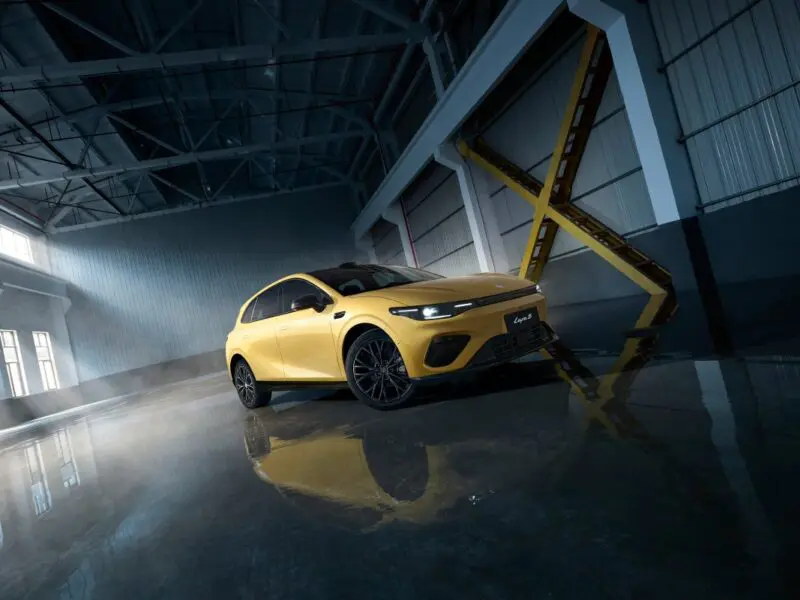
The global electric vehicle (EV) scene continues to surge forward with remarkable momentum, with new models, technologies, and market developments shaping the direction of the automotive industry. The latest wave of EV news paints a vivid picture: affordability is expanding, technological advancements are accelerating, and competition among major and emerging players is becoming fiercer than ever. From budget-friendly models in China and New Zealand to high-tech trucks and solid-state battery collaborations, the electric mobility transition is entering an exciting new phase.
The arrival of affordable mobility: Leapmotor and BYD redefine entry pricing
Chinese automakers continue to exert pressure on the global EV market by driving down vehicle costs without major performance compromises. Leapmotor, a fast-rising EV startup, has just unveiled its new global hatchback, positioning it as one of the lowest-priced electric cars on the market — starting from just under $A23,000. This move marks Leapmotor’s next step toward international expansion, aligning with the Chinese firm’s ambition to capture demand in price-sensitive regions that still lag in EV adoption.
At the same time, BYD — the world’s leading electric car manufacturer by sales — announced its new entry-level model, the Atto 1, for the New Zealand market. Priced around $A26,000, it cements BYD’s role as an affordability leader and signals how seriously the Chinese brand is pursuing Western expansion. The Atto 1, together with BYD’s growing Australian line-up, underscores that mainstream electric motoring is no longer confined to luxury buyers. Instead, 2025 is becoming the year when everyday drivers finally see EVs priced on par with internal combustion alternatives.
Tesla and Ford highlight contrasting strategies in electrification
Tesla’s announcement of a redesigned version of its Semi truck emphasizes continued innovation at the high end of the EV spectrum. The new Semi adopts a front design inspired by the Model Y, tailored for aerodynamics and improved power efficiency. Equally significant, Tesla positions the truck as a cornerstone for its upcoming push into fully autonomous logistics, anticipating a shift in commercial mobility that could redefine freight transportation.
In contrast, Ford’s electric van rollout reveals a more cautious move. The new E-Transit Custom has finally reached Australian shores, offering solid performance and practicality for commercial users. However, its omission of the increasingly popular vehicle-to-load (V2L) capability — which allows vehicles to power tools or charge devices directly — reflects a conservative strategy, possibly aimed at ensuring production stability. While reliable and well-packaged, Ford’s decision not to include that feature suggests it is still feeling its way through electrification strategy amid rising competition.
Charging and infrastructure: new players stepping in with fresh models
Beyond automakers, the shifting infrastructure landscape is equally critical. Supermarkets and major retailers are emerging as unexpected yet important players in public charging expansion. Several retailers across Australia are experimenting with solar canopy installations over carparks, combining electricity generation with on-site fast charging for customers. This approach effectively turns every grocery trip into an opportunity to recharge, potentially smoothing the path toward mass EV ownership.
Such initiatives indicate a broader evolution in revenue models — from traditional retail to energy services. Supermarkets hope to capitalize not only on attracting customers but also on the growing market for publicly accessible clean power. In a world where convenience dictates adoption rates, these efforts could play a crucial role in normalizing electric mobility.
Technological leaps: solid-state batteries and the future of range
Among the more futuristic developments comes the partnership between BMW, Samsung, and U.S.-based firm Solid Power. Their collaboration in pushing forward all-solid-state battery (ASSB) technology could yield one of the most important breakthroughs for EVs over the next decade. Solid-state batteries promise higher energy density, faster charging, and significantly improved safety compared to today’s lithium-ion systems. If commercialized successfully, the technology could reshape the entire economic equation of electric mobility — from small city cars like Leapmotor’s hatchback to large freight vehicles like the Tesla Semi.
Markets in motion: BYD overtakes Tesla and new uncertainties emerge
In the Australian EV market, BYD’s momentum continues — it has now overtaken Tesla in monthly sales as of October. While overall EV sales slowed from the previous month’s record highs, the year-to-date figures remain strong, suggesting sustained growth and interest. This shift highlights not only the growing maturity of the sector but also a diversification beyond traditional leaders.
Meanwhile, not all automakers are enjoying smooth waters. Polestar, the Swedish premium EV brand backed by Volvo and Geely, has been warned by Nasdaq that it risks delisting if its share price does not recover above $US1 within the coming months. The news underscores the financial strain smaller dedicated EV automakers face amid aggressive pricing and competition from legacy giants and Chinese upstarts.
Data, performance, and environmental accountability
A recent study revealing that hybrids and small SUVs consume up to 21% more fuel than their official figures advertised adds yet another complication to consumer choice. With many buyers relying on hybrids as a steppingstone toward full electrification, this discrepancy highlights the importance of transparency and real-world efficiency. It reinforces the case for fully electric options — not merely as environmentally minded purchases but as genuine economic alternatives.
Looking ahead
Collectively, these stories illustrate the electric mobility ecosystem in flux. As prices plunge and battery technology continues to mature, manufacturers across the spectrum — from legacy brands such as Ford and BMW to disruptors like BYD, Leapmotor, and Xpeng — are redefining what it means to build and sell a car. Xpeng, for example, has announced plans to launch three different Robotaxi models by 2026, leveraging artificial intelligence and autonomy as the next competitive frontier.
The overall takeaway is clear: the EV revolution is no longer a future promise. It is happening right now, unfolding across every segment — from small affordable cars and logistics vehicles to ambitious battery labs and AI-driven taxis. With intense competition, innovation, and shifting market dynamics, the next year promises to be one of the most transformative in the history of modern transportation.
All EV Sales Research Team
11/9/2025
